Default
Dean Stone 2022 President Georgia Board of Pharmacy

Dean Stone, owner, president, and pharmacist of IHS Pharmacy & Gifts, has been elected by fellow members of the Georgia Board of Pharmacy to lead as President on the Board for 2022. The Georgia Board of Pharmacy is an eight-member board appointed by the Governor to protect, promote, and preserve the public health, safety, and welfare of the citizens of Georgia.
Stone’s election as President of the Board will allow him to work alongside six other practicing pharmacists and one consumer member. They are responsible for the regulation of pharmacists and pharmacies in Georgia. The Board reviews applications, administers examinations, licenses qualified applicants, and regulates the practice of licensees throughout the state.
Stone expressed his gratitude by saying, “What an honor it is for the members of the Board to have such confidence in me to lead by electing me as President for 2022. I look forward to taking the challenge on and working to protect the citizens of this great state.”
Dean Stone received his bachelor’s degree in Pharmacy from the University of Georgia in 1993. Since 1998, he has been the owner, president, and pharmacist for IHS Pharmacy & Gifts in Metter. He and his wife Krista live in Metter and have five children.
CDC Mask Update
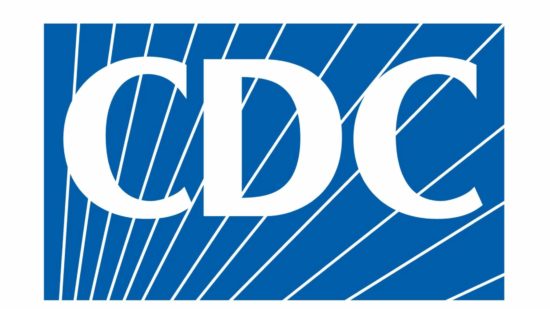 CDC updates consumer website on masks to emphasize protection, fit, and comfort
CDC updates consumer website on masks to emphasize protection, fit, and comfort
For Immediate Release: Friday, January 14, 2022
Contact: Media Relations
(404) 639-3286
https://www.cdc.gov/coronavirus/2019-ncov/prevent-getting-sick/types-of-masks.html
https://www.cdc.gov/coronavirus/2019-ncov/prevent-getting-sick/masks.html
Summary of Recent Changes
CDC has updated its consumer webpage describing the types of masks and respirators used to prevent the transmission of SARS-CoV-2. Masking is a critical public health tool to prevent the spread of COVID-19, and it is important to remember that any mask is better than no mask. To protect yourself and others from COVID-19, CDC continues to recommend that you wear the most protective mask you can that fits well and that you will wear consistently.
The updated page will lay out the protection provided by available masks and respirators, noting that some provide better protection than others. These updates to our webpage reflect the science on masking, including what we have learned in the past two years, and will provide people the information they need to improve how well their masks or respirators protect them. We will continue to share the science of masking as it becomes available.
###
U.S. DEPARTMENT OF HEALTH AND HUMAN SERVICESexternal icon
CDC works 24/7 protecting America’s health, safety and security. Whether disease start at home or abroad, are curable or preventable, chronic or acute, or from human activity or deliberate attack, CDC responds to America’s most pressing health threats. CDC is headquartered in Atlanta and has experts located throughout the United States and the world.
FDA Warns about Dental Problems with Buprenorphine Medicines
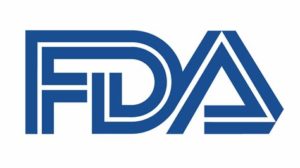 Posted 01/12/2022
Posted 01/12/2022
FDA warns about dental problems with buprenorphine medicines dissolved in the mouth to treat OUD and pain.
FDA is drawing attention to dental problems linked to buprenorphine-containing medications that are dissolved under the tongue or placed against the inside of the cheek to treat opioid use disorder (OUD) and pain. Even patients with no prior history of dental problems could develop severe tooth decay, cavities, and oral infections and possibly even lose some teeth. FDA is requiring a new warning on prescribing information and other literature to alert patients and providers; however, based on the favorable risk-benefit profile, it still considers buprenorphine to be an important and viable treatment option. The regulator recommends that health care providers and patients have a conversation about oral health before initiating treatment with transmucosal buprenorphine. Providers should counsel patients on steps for reducing the risk of serious dental complications, such as gently rinsing mouth with water after taking the medicine and waiting at least 1 hour before brushing their teeth, and refer them to a dentist. Patients should discuss their buprenorphine regimen with the dentist and schedule regular checkups during the duration of treatment. Any problems should be entered into FDA’s MedWatch Safety Information and Adverse Event Reporting Program.
New Oral Antiviral Medications for COVID-19
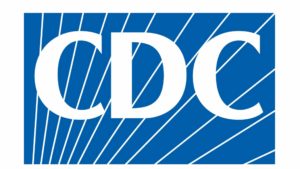 What Clinicians Need to Know About the
What Clinicians Need to Know About the
New Oral Antiviral Medications for COVID-19
COCA Call, January 12, 2022
The emergency use authorizations (EUAs) for the new oral antiviral medications molnupiravir and Paxlovid™ (nirmatrelvir/ritonavir) supplement current therapeutic efforts to decrease hospitalizations and prevent severe COVID-19 and death.
During this COCA Call, presenters from the Centers for Disease Control and Prevention (CDC), Office of the Assistant Secretary for Preparedness and Response, U.S. Food and Drug Administration (FDA), and the National Institutes of Health (NIH) describe the recent EUAs and NIH treatment guidelines, patient prioritization, and resources for healthcare providers.
Subject matter experts will review when to prescribe antiviral medications including patient assessment, how to have a risk-benefit discussion to address patient questions or concerns, and how to prioritize patients if medications are in short supply.
The recording is available for viewing on the COCA Call webpage. The presentation deck is included.
COCA Call Objectives:
At the conclusion of the session, the participant will be able to accomplish the following—
- Cite background information on the topic covered during the presentation.
- Discuss CDC’s role in the topic covered during the presentation.
- Describe the topic’s implications for clinicians.
- Discuss concerns and/or issues related to preparedness for and/or response to urgent public health threats.
Promote health improvement, wellness, and disease prevention in cooperation with patients, communities, at-risk populations, and other members of an interprofessional team of healthcare providers.
Presenters:
Lauri Hicks, DO
Captain, US Public Health Service
Chief Medical Officer, COVID-19 Response
Director, Office of Antibiotic Stewardship
Division of Healthcare Quality Promotion
Centers for Disease Control and Prevention
Colin Shepard, MD
CDC Liaison to the Assistant Secretary for Preparedness and Response (ASPR)
Center for Preparedness and Response
Centers for Disease Control and Prevention
Stephanie Troy, MD
Senior Medical Officer
Division of Antivirals
Center for Drug Evaluation and Research
U.S. Food and Drug Administration
Aimee Hodowanec, MD
Senior Medical Officer
Division of Antivirals
Center for Drug Evaluation and Research
U.S. Food and Drug Administration
Alice K. Pau, PharmD
Executive Secretary, NIH COVID-19 Treatment Guidelines Panel
Staff Scientist (Clinical)
Clinical Pharmacy Specialist
Division of Clinical Research
National Institute of Allergy & Infectious Diseases
National Institutes of Health
For information about this update or other clinical issues, or to send your feedback, please contact us at coca@cdc.gov
- CDC Clinician Outreach and Communication Activity Facebook page—connect with COCA on Facebook
- Clinician Outreach and Communication Activity—resources for healthcare providers
- COCA RSS Feed—subscribe to be notified of conference calls, updates, and CDC guidance for health providers
- Crisis & Emergency Risk Communication Training—training program that draws from lessons learned during public health emergencies, and incorporates best practices from the fields of risk and crisis communication
Health Alert Network—CDC’s primary method of sharing cleared information about urgent public health incidents with public information officers; federal, state, territorial, and local public health practitioners; clinicians; and public health laboratories.
iPLEDGE Corrected Phone Number
January 3, 2022
The FDA knows that pharmacies, patients, and prescribers are having difficulties with the modified iPLEDGE program, including issues with website logins and call center wait times. If you do not have access to your account on the website, contact the iPLEDGE call center at 866-495-0654. FDA has issued a CDER statement requesting proposals for solutions from isotretinoin, manufacturers, pharmacies and dermatology organizations. NCPA is working with the FDA and the iPLEDGE vendor to address this situation with a temporary solution so patients will have continued access to their prescriptions and will communicate any updates via qAM as soon as possible.
https://ncpa.org/newsroom/qam/2022/01/03/update-corrected-phone-number-ipledge-system-issues
Georgia Receives Oral Antiviral COVID-19 Treatments
Molnupiravir and Paxlovid™ Available at Select Retail Pharmacies
FOR IMMEDIATE RELEASE: December 30, 2021
CONTACT: nancy.nydam@dph.ga.gov
Atlanta – The Georgia Department of Public Health (DPH) is announcing the allocation of Merck and Pfizer oral antiviral treatments for COVID-19 to select retail pharmacies in Georgia. Initial supply of Molnupiravir and Paxlovid™ from the federal government is very limited. DPH anticipates additional allocations in the coming weeks as production increases.
Per guidance from the U.S. Department of Health and Human Services (HHS), initial allocations were made to federal pharmacy partners. DPH has partnered with Walmart, Walgreens, and Good Neighbor Pharmacy Group (a group of small independent pharmacies) to ensure coverage across the state. Pharmacies currently allocated treatments can be found on the DPH website at
https://dph.georgia.gov/document/document/covid-19-oral-antiviral-pharmacy-locations/download
The Food and Drug Administration (FDA) issued an emergency use authorization for molnupirvar by Merck and an emergency use authorization for Paxlovid™ by Pfizer as oral antiviral treatments of COVID-19. Early studies indicate these treatments may reduce severe outcomes from COVID-19 including hospitalization or death. The antivirals are recommended for treatment of individuals who are at high risk for severe COVID-19 or have underlying medical conditions. Both drugs require a prescription and should be initiated as soon as possible after diagnosis of COVID-19 and within five days of symptom onset.
While antivirals may help treat COVID-19, vaccination is the best prevention against COVID infection. Georgians aged 5 and older are eligible for vaccination. Georgians 16 and older are eligible for boosters six months after completing their primary vaccine series of either Moderna or Pfizer (only Pfizer is authorized for booster doses in 16- and 17- year-olds) and two months after their J&J vaccine. To find a COVID vaccination location, visit https://dph.georgia.gov/covid-vaccine.
Basic prevention measures should also be followed to help prevent further spread of COVID and mitigate outbreaks of infection, especially in public settings: wear a mask, physically distance, and wash your hands frequently with soap and water.
For updates on COVID-19, follow @GaDPH and @GovKemp on Twitter and @GaDPH and @GovKemp on Facebook.
Letter to Commissioner John King

The American Pharmacy Cooperative, Inc. (APCI), Georgia Pharmacy Association (GPhA), and Georgia Society of Clinical Oncology (GSCO) teamed up to ask the Georgia Commissioner of Insurance, John King, to enforce our laws. In a December 13, 2021 letter to the commissioner, they cited a pattern of large-scale non-compliance with Georgia’s PBM laws in Chapter 64 of Title 33 in the commercial market.
Thomas Sherrer Jr. Named Marietta Citizen of the Year
“Thank you. I am very humbled and honored to be selected for such an award.” Thomas Sherrer, Jr., PharmD.
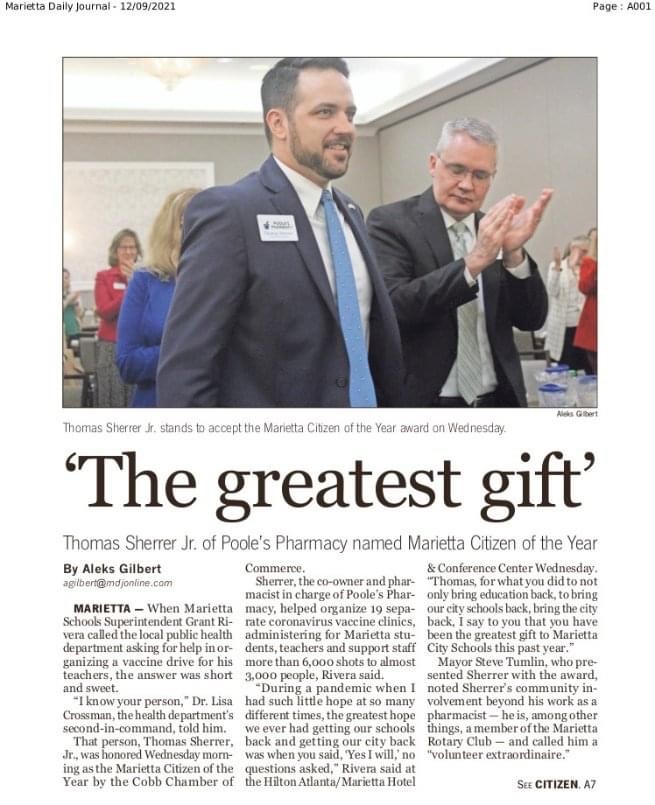
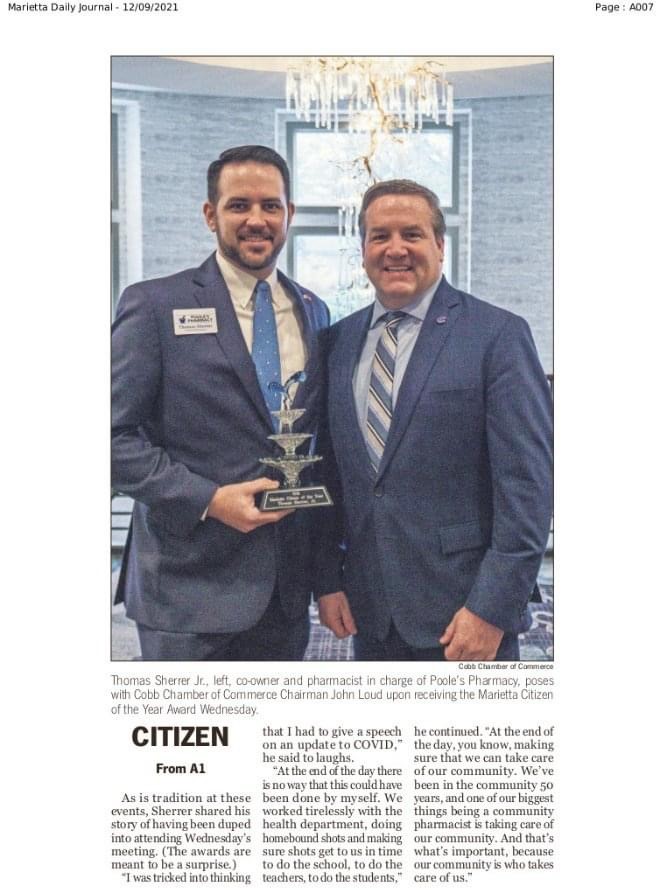
JONATHAN MARQUESS NAMED GPHA VP of AIP
NEWS RELEASE
For Immediate Release
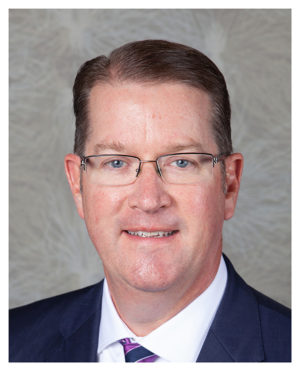 ATLANTA (December 2021) Jonathan G. Marquess, PharmD, CDE, FAPhA, was named as Georgia Pharmacy Association (GPhA) Vice President of the Academy of Independent Pharmacy, effective January 3, 2022. Marquess succeeds Jeff Lurey, RPh, in the position.
ATLANTA (December 2021) Jonathan G. Marquess, PharmD, CDE, FAPhA, was named as Georgia Pharmacy Association (GPhA) Vice President of the Academy of Independent Pharmacy, effective January 3, 2022. Marquess succeeds Jeff Lurey, RPh, in the position.
Marquess has enjoyed a distinguished career in pharmacy. He received his Doctor of Pharmacy degree from Mercer University Southern School of Pharmacy in 1993. He studied international health care in Copenhagen, Denmark in 1993. He also completed an APhA Community Pharmacy Management Program from Drake University (Des Moines, Iowa) in 1996. He has earned many certifications including Certified Diabetes Care and Education Specialist (CDCES), Certified CGMS (Sensor) Trainer, Certified Insulin Pump Trainer (CPT). He has also completed certificate programs in Pharmacy-based Immunization Delivery, Pharmaceutical Care for Patients with Diabetes, Pharmaceutical Care for Patients with Dyslipidemias, Immunization Training for Community Pharmacy, Osteoporosis, and Compounding Pharmacy Certificate Program, PCCA.
Marquess is currently the President/CEO of the Institute for Wellness and Education in Woodstock, Georgia, and owns multiple pharmacies in Georgia. In addition to owning and managing pharmacies, Marquess has had an impressive pharmacy career, including serving as President of the GPhA in 2004-2005. In addition, he served as Clinical Assistant Professor at Mercer University from 1996-2001. He went on to become Director of the Non-Traditional Doctor of Pharmacy Program and Director of Continuing Education and Professional Affairs from 1997-2001. He was Vice President of Professional and Clinical Affairs for the American Pharmacy Cooperative, Inc. (APCI) from 2013-2015. He has served as the Third, Fourth, and Fifth Vice President for the National Community Pharmacists Association (NCPA) since 2017. He has served on and often chaired many pharmacy-related boards and committees, including serving on the GPhA Board of Directors. He also has a significant history of speaking engagements, clinical presentations, publications, poster presentations, peer reviews, facilitation, and special training in pandemic preparedness.
Marquess has stood out from the crowd for many years and has been awarded many prestigious awards by the pharmacy community:
- 2016 Daniel B. Smith, Practice Excellence Award, American Pharmacists Association
- 2015 Fellow, American Pharmacists Association
- 2015 Carlton Henderson Award, Mercer University College of Pharmacy Alumni Association
- 2012 Independent Pharmacist of the Year, Georgia Pharmacy Association – AIP
- 2010 Finalist – Next Generation Pharmacists Award, Entrepreneur of the Year and Patient Advocate of the Year
- 2008 Innovative Pharmacists Award, Georgia Pharmacy Association
- 2005 Pharmacy Achievement Award, Georgia Pharmacy Association
- 2004 Pharmacy Leadership Award, National Community Pharmacy Association
- 2003 Young Alumni Award, Mercer University Southern School of Pharmacy
- 2001 Mal T. Anderson Region President of the Year, Georgia Pharmacy Association
- 1998 Phi Beta Delta, International Scholars Society
- 1997 Distinguished Young Pharmacist, Georgia Pharmacy Association
- 1993 Ethics, Scholarship and Leadership Award, Eli Lilly and Company
- 1993 Mercer University Student Bowl of Hygeia
- 1993 National Collegiate Student Government Award
- 1992 Anne Morris and Carlton Henderson Scholarship
- 1992 Outstanding Young Men in America
- 1993, 1992, 1991 Who’s Who Among Students
- 1991 Leadership Scholarship, McKesson Drug Company
- 1990 Dean’s Scholarship, Mercer University
“We had a number of great candidates apply for the position, but after reviewing them all, it was clear that Jonathan Marquess brought the talent, experience, and devotion to AIP over a number of years that the search committee was looking for,” said Bob Coleman, GPhA CEO.
Marquess has been married to GPhA Past President Pamala S. Marquess, PharmD, for 28 years, and together they have instilled the love of the profession to their two children. Will, 22, is a first year pharmacy student at UGA, and Madison, 20, has been accepted at UGA College of Pharmacy for the fall of 2022. The family lives in Acworth, Georgia. Together, they enjoy watching college football, golf, beach vacations, and golf.
Marquess told us he is excited and looks forward to working with all AIP members. Marquess is eager to continuing the legacy of leadership from Joe Mengoni and Jeff Lurey. He said, “The thing I find most impressive is how independent pharmacists rose to the occasion during the pandemic and proved their worth as an integral part of the healthcare team with the ability to directly improve patient health.”
GPhA welcomes Jonathan Marquess to the family and looks forward to ensuring the future of independent pharmacy.
###
The Georgia Pharmacy Association represents Georgia’s pharmacists, pharmacy technicians, and their patients. We fight for pharmacists at the capitol. We provide education, networking, and resources to improve pharmacy practice every day. For more information and the latest pharmacy news, visit GPhA.org.
Media Contact:
Michelle Turkington, Director of Marketing and Communications
Georgia Pharmacy Association
mturkington@gpha.org
678-640-4313
Georgia DPH Update Molnupiravir
Presented by Lisley Brooks, BS, Doctor of Pharmacy Candidate Mercer, Emergency Response Intern, and Tracey Dabbs, PharmD, Georgia DPH.
Indicate interest in Molnupiravir to Georgia DPH.
Mistake-proofing a Hole in the Safety Net
 Highlights of Evidence-based Practices to Reduce Point of Sale (POS) Errors
Highlights of Evidence-based Practices to Reduce Point of Sale (POS) Errors
This article was written by APMS PSO staff in consultation with its Chief Medication Safety Officer, John M. Kessler, BS Pharm., PharmD.
Find quick recommendations and self-assessments at the end of this article to share with your pharmacy team!
The pharmacist hangs up the phone in disbelief after hearing from a long-time patient that her husband is in the hospital. He was dizzy and nauseous the night before, and when his wife looked at the Rx vial, she realized that there was someone else’s name on his prescription. The pharmacist’s gut clenches as she wonders, “ We have safety checks, how could we have given a long-time patient the wrong medication?”
You are careful, but mistakes happen. This article will summarize four primary strategies to reduce the risk of POS errors and offers some practical suggestions to reduce the chance of an error happening in your pharmacy and reaching the patient.
Point of Sale (POS) errors are fundamentally defined as “wrong patient” errors due to a mix-up in which prescriptions are bagged and dispensed to a patient. Depending on the pharmacy’s workflow, POS errors can occur when the prescription is handed to the wrong patient or, earlier in the process. For example, when a medication is placed in the wrong patient’s bag, when medications from two or more patients are placed in the same bag, or an intended medicine is omitted from the bag and fails to be dispensed. Additional errors can occur when the bag contains the patient leaflet intended for a different patient. Also, misreading the bag, or the patient identifiers, can result in POS errors. Regardless of the cause, the safety steps to prevent and detect these errors before they reach the patient and cause harm are similar.
To reduce the chance of a medication error, integrate some of these safety tactics into your pharmacy’s workflow.
- Establish policies and procedures that focus on preventing error such as standardized workflow with built-in redundancies, checklists, and reminders
- Automation and implementation of “hard stops”
- Forcing functions that do not allow advancement of a task without additional verification steps1, including POS bar code verification prior to completing the sale/transfer to the patient. (*Forcing functions are highest on the spectrum of effectiveness while standardization of procedures is ranked moderately high in its ability to prevent errors from reaching the patient*)
|
Note: keep in mind that in this article, the use of automated technologies that link the register sale to the dispensing computer, in safety terms, is a “forcing function”. A detailed review of intake and filling errors that occur earlier in the dispensing workflow have been intentionally excluded from this brief POS review. |
The absence of standardized procedures for the pharmacist, technician, and register clerk results in the inability to expect improvement in rates of POS errors. A shared understanding among the entire pharmacy team of medication safety policies and procedures is key.
While the pharmacy may have implemented safety checks to prevent mix-ups, the effectiveness of the strategies is only as good as the overall compliance in using each check. Some questions the pharmacist could ask are below:
- Is everyone in the pharmacy aware of the safety policies and procedures?
- Are they followed, or have work-arounds and short cuts replaced them in everyday operations?
- Does the overriding culture in the pharmacy focus on safety or has a competing focus resulted in unconscious support and encouragement of shortcuts and workarounds that deviate from policies and procedures?
The pharmacy manager or safety officer could conduct discrete direct observations of the actual workflow from receipt of the prescription through dispensing/counseling, noting variations in practice or deviations from standardized procedures.
Self-Assessments and Recommendations
Below are recommendations and suggestions for your pharmacy, with a corresponding self-assessment checklist for each, that may help you determine some areas for improvement. Here are some tips on how to tackle self-assessments efficiently so that you can begin implementing effective safe practices into your pharmacy workflow:
- Set aside adequate time for the assessment. This is a time for thoughtful, honest reflection and evaluation of your pharmacy and pharmacy team.
- Be prepared with a writing utensil and a hard-copy for answers, notes, and ideas.
- Be ready and excited to implement some tools and best practices into your workflow and to reduce the risk of POS errors in your pharmacy!
- Dispensing/fill baskets are recommended practices to keep the prescription workflow area organized while minimizing the risk that the wrong product becomes part of a different patient’s supply. The basket system is critical when more than one patient’s medications are prepared on the same counter at the same time. Each patient must have their own basket – with NO exceptions (e.g., for twins/siblings; spouses/partners; parent/child), even if 2 patients’ prescriptions are on the same written/faxed order. Keep in mind that baskets can help organize the work-counter; however, their safety value is easily defeated if any stock is allowed to be placed on the counter outside a basket, or unlabeled vials are placed in the workflow, or vials and labels are not kept within the basket; or there is no single pharmacist or technician who can claim “ownership” of a given basket before it is handed-off to the next workflow step.
Pharmacy has a standardized written procedure for:
- Use dispensing/filling baskets for every patient (regardless of the number of prescriptions being filled).
- Ensure that each pharmacist and technician processes only a single patient’s prescriptions at a time.
- Ensure that each basket is “owned” by a designated pharmacist or technician at a stage in the workflow.
- Ensure that baskets are appropriately sized and not stacked or nested in a manner that would allow a vial or label to fall or “spill” into another patient’s basket.
- Patient counseling is a multi-step process that includes:
- determining when counselling is needed,
- the quality of the professional counselling,
- the patient’s comprehension of the information; and
- achieving expected patient behaviors.
A discussion of the counseling process itself is beyond the scope of this brief. Most importantly, none of the above steps will be relevant if the patient does not accept an offer to counsel. Therefore, improving the effectiveness of patient counseling begins with increasing the number of patients who accept offers for counseling. Counseling is expected to improve the accuracy of the patient’s medication list and detect medication related problems such as therapeutic duplication, interactions, allergies, excessive medication use, problems with medication adherence and disease prevention measures, such as improving the vaccination rate for pediatric and adult patients. Counseling is also expected to detect potential medication errors before they “reach the patient”. Root cause analysis of serious medication errors has demonstrated that even the most basic information exchanged during a counseling session would have alerted the patient or the pharmacist to prescribing and dispensing errors, including wrong drug, wrong dose, wrong frequency, wrong patient, drug allergy and drug interactions. The primary quality improvement outcome is to measure the patient acceptance rate of the offer to counsel and then continuously increase that rate.
Pharmacy has a standardized written procedure for patient counseling and:
- The will-call/pick-up location has adequate privacy protections to promote counseling.
- The offer to counsel is made in a positive manner, encouraging the patient to accept.
- The pharmacy teaches and uses scripted language to encourage acceptance of the offer to counsel.
- Such phrases include:
- “The pharmacist would like to talk with you about a change in your prescription”.
- “The pharmacist would like to talk with you about some important new information
- about your prescriptions”.
- “The pharmacist would like to discuss with you some important safety information
- about your prescription”.
- The pharmacist flags the prescription bag in an obvious manner to inform the clerk that the pharmacist must speak with the patient.
- The pharmacy has a procedure to require pharmacist counseling for selected medications or changes in the prescription including narrow-therapeutic index drugs; high alert drugs, pediatric patients; complex dosing or administration instructions; and changes in dose.
- The pharmacy uses a “triaged” approach to counseling (vs an “all-or-none” plan), applying professional judgment to determine when and how much information should be disclosed during the counseling session.
- Patients are encouraged to ask questions or raise concerns, even after leaving the pharmacy.
- Patient questions, either in person or over the phone are always treated with respect and taken seriously
- Open the bag (a.k.a Show and Tell) “Mix-ups” can occur when a correctly verified prescription is placed in the bag for a different patient. Once “bagged”, a high percentage of these errors will reach the patient. Opening the bag and showing the patient at the time of pickup can decrease most types of mix-up errors by more than 50%. This is a “safe-transfer” strategy that is independent from patient counseling; the latter which can only be conducted or supervised by a pharmacist. The “show and tell” method is further enhanced when the patient becomes a partner is assuring their own safety and asked to confirm the dispensed prescriptions (drug, dose, and directions) are the expected items. When used in combination with other safety strategies, the risk of an error reaching the patient drops even further. While mix-ups can occur with any drug and with any patient, a triaged strategy would focus on prescriptions with a greater risk of causing harm. Pharmacies should develop mandatory “open the bag” policies for pediatric prescriptions and high alert medications, with notable examples including warfarin, insulins, hydralazine/hydroxyzine, and methotrexate.
Pharmacy has a standardized written procedure to open, review, and show bag contents to patient
The will-call/pick-up location has adequate privacy protections to enable the pharmacy employee to “show, tell, and discuss” with the patient.
- At the time of pick-up, in the presence of the customer and with the customer’s involvement, or prior to home delivery with a second person, the bag is opened, and the contents matched to the receipt, inspecting for omitted or extra items.
- The patient is asked to confirm if these are the prescriptions and doses they expected. At any hint of concern or question, automatic pharmacist review is required.
- Written medication guides and/or leaflets are included and matched with each prescription dispensed.
- Patients are encouraged to ask questions or raise concerns, even after leaving the pharmacy.
- There is a defined list of high alert medications that require an “open the bag” procedure.
- All pediatric prescriptions, new and refills, require an “open the bag” procedure.
- Patient identification procedures Adopting a standardized 2-identifier procedure is an evidence-based practice to reduce the risk of mix-ups at the POS. Improving the accuracy of the practice is an appropriate strategic target for quality improvement. Weak and error-prone identification procedures will:
1) fail to have the patient state their name and identifiers, or
2) allow employees to use their “judgment” in deciding when to apply the procedure, or
3) assume another employee has already checked the patient’s identity. The pharmacy’s 2-identifier procedure should define the acceptable identifiers.
The 2 most acceptable are the patient name (first and last) and the date of birth (not age). Phone numbers and addresses are not reliable primary identifiers and should be avoided or used only as a 3rd confirming identifier in select situations. At a minimum, employees should be trained to:
1) use auditory and visual cues to detect identification errors, and
2) say “for your safety” as part of a verbal script to help the patient understand, minimizing any potential social awkwardness for regular customers, and
3) integrate the 2-identifier procedure into the “show and tell” procedure for maximum efficiency.
Each pharmacy has strategies and procedures to increase compliance with patient identification procedures
The pharmacy requires employees to ask for and the patient to identify themselves using 2 unique identifiers at the time of pick-up.
- Pharmacy employees are trained on the contributing factors that often lead to patient-mix ups. Examples include: patients with similar names living at the same address, failing to ask patients to actively state their identifiers (vs. responding to a name called out by the pharmacy from the pick-up window); prescription pick-up for more than one person in the household (e.g. siblings, twins, father- son/mother-daughter); patients with compound family names (common in Latino, South American, and Middle Eastern cultures); and prescriptions for persons with intellectual or cognitive disabilities.
- Pharmacy employees are empowered with a pharmacy “safety rule” that requires the patient to disengage from a cell phone call during the patient identification and pick-up process. (Signage signifying mandatory “cell phone free” zone to ensure patient safety.
- Pharmacy Times. April 1, 2007 Michael J Gaunt, PharmD The Best Error-prevention Tools for the Job
The mission of APMS® is to foster a culture of quality within the profession of pharmacy that promotes a continuous systems analysis to develop best practices that will reduce medication errors, improve
medication use and enhance patient care. Pharmacies work with APMS® to look for inherent risks in the pharmacy’s workflow. Their program, Pharmacy Quality Commitment +TM (PQC+) is an interactive CQI
program that provides tools and resources for the pharmacy workforce to identify, report, and analyze
quality-related patient safety events. APMS is a 501 c 3 supporting organization of the National Alliance of State Pharmacy Associations.
Build a Positive Safety Culture in your Pharmacy
 Written by APMS PSO staff in consultation with its Chief Medication Safety Officer, John M. Kessler, BS Pharm., PharmD.
Written by APMS PSO staff in consultation with its Chief Medication Safety Officer, John M. Kessler, BS Pharm., PharmD.
Find a self-assessment at the end of this article to share with your pharmacy team!
Over twenty years ago the Institute of Medicine* reports highlighted the unhealthy culture of individual blame that existed throughout healthcare. Organizations began the daunting task of reworking their goals and priorities so that lessons learned from the patient safety movement resulted in improved outcomes. Often, economics and other priorities compete for focus. For example, razor thin profit margins create pressure for pharmacies to fill as many prescriptions as possible, which can encourage a culture that values quantity over quality. Mistakes are inevitable when the primary focus becomes the number of prescriptions going out the door rather than the patient’s safety and optimal medication use outcomes. The adoption of a positive safety culture and a just culture is a fundamental and necessary core value as it can result in more efficient operations, optimized workflow, fair treatment of employees, and improved patient outcomes. At a fundamental level, ethical principles support the optimal safety culture that all pharmacies strive for: respect for patient autonomy, truthfulness, fidelity, beneficence, and non-maleficence.
The Pharmacy Environment
For a positive safety culture and a just culture to thrive, the owner or senior management must demonstrate through words, written policy, and action that the collection and analysis of mistakes and near misses are encouraged and valued as opportunities to learn. Leaders and employees are committed to building a safety mindfulness into the daily workflow, organizational decision making, and individual behavioral choices. An awareness exists that recognizes human fallibility as inevitable, even with familiar, well-designed processes, and highly-trained, experienced employees.
A safety culture exists when individual choices and organizational decisions are driven by the shared goal of recognizing and reducing risk to prevent patient harm and when there is shared accountability for the outcomes produced. It is not a blame-free environment, but one that seeks to discover the weaknesses in the system so that processes can be improved.
Patient Safety Organizations
A Patient Safety Organization (PSO) can help you to develop a safety culture and a just culture. The Alliance for Patient Medication Safety (APMS) is a PSO that helps independent community pharmacies build and improve these cultures by providing the following: defined legal confidentiality protections for quality and safety programs, strategies for improving the culture of reporting, and strategic ways to learn from patient incidents, risky behaviors, and unsafe conditions. In brief, PSOs help pharmacies create a safe space to talk about continuous quality improvement plans. Pharmacies are not automatically granted these important PSO protections until they join a PSO and participate in PSO-related activities.
Reporting Culture: Increasing the visibility of risk and harm
The first step is to increase the visibility of risk in the pharmacy and harm to patients. PSOs can help pharmacies start or enhance a program that encourages all employees to report occurrences of medication errors, potential errors (i.e., good catches/near misses), unsafe conditions, and adverse reactions. Collectively these are known as Quality-Related Events (QREs). A well operationalized QRE reporting program will assure that employees know what to report, how to report, when to report, and what happens to their report afterwards. The system should be available to all employees, easy to access, and easy to use when the employee sees a problem or is concerned about a risk to patients.
High quality and informative reports enable pharmacy managers to see and fully understand the problem. Most reporting systems use a combination of checkboxes and narrative fields to capture this information. Narrative stories, using the reporter’s own words, are often rich with information that helps uncover the true causes of error and harm. An informative and complete report will include a full description of the event; the degree of actual known harm, immediate mitigation steps to provide care or referral for care, and the ultimate outcome of the event (e.g., resolved, ongoing, permanent/irreversible harm). A thorough, complete narrative will make it easier to understand how the QRE happened and how it was detected so that workflow adjustments and corrective actions can be more exact.
Quality Assurance (QA) Meetings
The next step is to hold regular QA meetings with the pharmacy team within the safe space defined by the PSO. Within this safe space, managers can lead discussions about the risks and harms that have been reported and any lessons learned. Effective QA meetings will engage employees in a discussion of other probable causes and related concerns, gathering additional information to better understand the problems. Effective QA meetings also provide feedback to employees on how their reports were used to make improvements that reduce risk, harm, and decrease rework. Positive feedback to front-line employees is one of the most significant ways to build or enhance a safety culture and the reporting culture.
A Just Culture: Holding individuals and the system accountable
A just culture is one component of the larger patient safety culture. A just culture acknowledges that errors occur in any system in which humans work and strives to treat employees fairly and respectfully. A just culture holds the employee and the system accountable for the risk or harm. Pharmacies with a just culture will evaluate errors by looking at both human fallibility, human behaviors, and performance factors of the system. After a fair analysis of the QRE, the event is attributed to one of 3 categories: simple human error, risky behaviors, and reckless behaviors. The pharmacy manager then acts based on the category. Human errors are managed by consoling the employee and providing remedial actions if necessary. Risky behaviors are managed by coaching the employee to make safer choices. This coaching addresses the employee’s perception of risk and the behaviors that increase or reduce risk. Reckless behaviors are willful actions with the intent to harm and these (rare situations) are managed by punitive actions plus remedial actions as appropriate. In nearly every instance, system performance factors are also evaluated for their contribution to the error or harm.
Why a Just Culture matters.
It is difficult to build or improve a positive safety culture or a reporting culture in a workplace perceived as unfair and unjust. When employees are punished for human error, the outcome can be demoralizing to the individual and to others on the team. Employees are less likely to report future events for fear of being blamed or to prevent a colleague from being punished. Managers become even more disconnected from the reality of risks and harms as the likelihood and frequency of reporting decreases, small risks can grow larger and small harms can become significant harms. When employees are coached on risky behaviors, the manager is fundamentally changing the thinking and perception about risk. Effective coaching will either lead to positive changes in the employee’s behavior (i.e., by changing the perception of risk) or identify a situation that needs different remediation approaches.
Summary
A just culture, a reporting culture, and effective QA meetings are synergistic and essential parts of the pharmacy’s overall safety culture. The PSO adds further legal protections, providing a safe space to report, discuss, plan, and act to minimize risk and prevent future harms. Importantly, pharmacies must join a PSO to enjoy these protections.
Self-Assessment
Promote a safety culture that is built on the principle of a “collective mindfulness” of the possibility of failure and encourage employees to speak out with their concerns. Evaluate your pharmacy’s culture with a self-assessment (below). Share with your pharmacy employees and see if you all agree. This is a great start to creating a just culture, a reporting culture, and a safety culture in your pharmacy.
Check all that apply:
- Your pharmacy’s safety culture accepts that mistakes will happen, but preventing harm is the primary goal
- Pharmacy employees feel confident in speaking up, regardless of hierarchy.
- Pharmacy employees are encouraged to report QREs when they happen, without fear of penalty.
- QA meetings are conducted under the umbrella of PSO protections and focus on the problem, not the people involved.
- Pharmacy encourages storytelling during QA meetings to learn from mistakes.
- When the pharmacy implements corrective action plans, they make sense, are shared with all employees, and follow the 3-part “sniff test”:
- Does your workflow make it easy for each employee to make the safest choices and make it difficult to make unsafe choices?
- Can everyone see a clear line of reasoning between the causal/contributing factors and the actions taken? If managers and employees can’t easily see the connection, you need to rethink the plan.
- Is the corrective action plan monitored to assure it is working as intended or modified to better achieve its intended effects? More complex corrective action plans are piloted in a few locations before deploying across the company.
The mission of APMS® is to foster a culture of quality within the profession of pharmacy that promotes a continuous systems analysis to develop best practices that will reduce medication errors, improve medication use and enhance patient care. Pharmacies work with APMS® to look for inherent risks in the pharmacy’s workflow. Their program, Pharmacy Quality Commitment +TM (PQC+,) is an interactive CQI program that provides tools and resources for the pharmacy workforce to identify, report, and analyze quality-related patient safety events. APMS is a 501 c 3 supporting organization of the National Alliance of State Pharmacy Associations.
HHS authorizes pharmacists to dispense COVID-19 therapeutics directly to patients
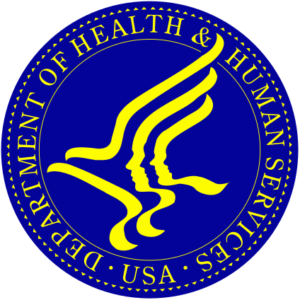 Nov. 29, 2021 –With little fanfare, the U.S. Department of Health and Human Services (HHS) recently moved to allow licensed pharmacists to dispense Food and Drug Administration (FDA)-authorized COVID-19 therapeutics directly to patients, without a physician prescription.
Nov. 29, 2021 –With little fanfare, the U.S. Department of Health and Human Services (HHS) recently moved to allow licensed pharmacists to dispense Food and Drug Administration (FDA)-authorized COVID-19 therapeutics directly to patients, without a physician prescription.
This step, taken by publishing an amendment to a declaration under the Public Readiness and Emergency Preparedness Act, should help remove barriers to providing these important drugs in the five-day window after symptoms appear, which is what studies from companies developing these drugs show is the optimal period for administration of their COVID-19 oral antivirals.
“HHS’ action will cut through the red tape to get therapies out to patients,” said Coalition for Healthcare Communication Executive Director Jon Bigelow. “This is particularly important in the context of the ongoing COVID-19 pandemic, because these antivirals work best if given in a very short window after symptoms appear.”
Specifically, a notice in the Sept. 14 Federal Register explains that HHS Secretary Xavier Becerra is expanding the authorization of a “qualified person” able to order and administer antivirals to include licensed pharmacists; licensed or registered pharmacy interns and qualified pharmacy interns may administer – but not order – COVID-19 antivirals.
“The Secretary anticipates that there will be a need to increase the available pool of providers able to order and administer COVID-19 therapeutics to address rising COVID-19 cases, to expand patient access to these critical therapies, and to keep as many patients out of the hospital as possible,” the Federal Register notice states. “Pharmacists, pharmacy technicians and pharmacy interns are well positioned to increase access to therapeutics and have played a critical role in this pandemic in overseeing COVID-19 testing and vaccine administration.”
This critical role is particularly important for antiviral administration, because individuals will have just five days in which to recognize symptoms, get a COVID-19 test, receive the test results, get a prescription for the antiviral and begin taking the drug. For people with limited access to healthcare, the pharmacy could serve as a convenient place to get tested, receive a prescription for, and obtain the potentially life-saving medication.
HHS and the Biden administration – which already has secured millions of doses of the investigational antivirals to provide free to patients once they are authorized – clearly see the pharmacy as a care hub for those who may not have access to primary care physicians and as an alternative to overwhelmed physician offices. “Given their skill set and training, as well as looming provider shortages, pharmacists, pharmacy technicians, and pharmacy interns will quickly expand access to COVID-19 therapeutics,” HHS stated in the notice.
An FDA advisory committee is convening Nov. 30 to weigh in on the COVID-19 oral antiviral medication being developed by Merck and Ridgeback Therapeutics (molnupiravir) in advance of any emergency use authorization from the FDA. An antiviral treatment from Pfizer (Paxlovid), as well as others, are on the horizon.
“Therapeutics are particularly important in the fight against COVID-19 because many people haven’t been – and won’t be – vaccinated,” Bigelow noted. “Early signals are that oral antivirals may be more effective than antibody therapy infusions – but they must be administered in a timely and equitable manner.”
Georgia DPH Information Session 12-2-21 and 12-3-21
Georgia DPH Information Session
December 2 and 3, 2021
Thursday and Friday, 8 am (for 30 minutes)
Tracy Dabbs, Emergency Preparedness Pharmacist with the Georgia Department of Public Health (DPH) will be hosting an informational session regarding Molnupiravir, Merck’s antiviral product for the treatment of COVID-19. This informational session will provide available product information and serve as a Q & A session for attendees.
Thu, Dec 2
08:00 AM – 09:00 AM
Informational Session for GPhA Members regarding Molnupiravir
Webinar ID: 841 6627 3259
Link for Thursday, Dec. 2 at 8:00 am: https://us06web.zoom.us/j/84166273259
Fri, Dec 3
08:00 AM – 09:00 AM
Informational Session for GPhA Members regarding Molnupiravir
Webinar ID: 846 9712 3184
Link for Friday, Dec. 3 at 8:00 am: https://us06web.zoom.us/j/84697123184
States Right to Regulate PBMS
NCPA and other pharmacy organizations are cheering a decision by the 8th Circuit of the U.S. Court of Appeals on Wednesday supporting North Dakota’s right to regulate PBMs. The case, Pharmaceutical Care Management Association v. Wehbi, is the first to consider at the federal appellate level the scope of the U.S. Supreme Court’s unanimous decision last year in Rutledge v. PCMA, which upheld an Arkansas state law regulating the abusive practices of PBMs. (PCMA is a trade association for pharmacy benefit managers; Nizar Wehbi is the North Dakota State Health Officer.)
In July, NCPA, along with the American Pharmacists Association and the North Dakota Pharmacists Association, and pharmacy associations of six additional states within the jurisdiction of the 8th Circuit, filed a friend of the court brief defending North Dakota’s position in the case. Oral arguments were held on Sept. 1.
“With this decision the 8th Circuit is starting to right its previous wrongs, affirming how states can use Rutledge to appropriately regulate health care’s mega-middlemen and protect citizens from harmful PBM business practices,” said NCPA CEO Douglas Hoey. “We applaud North Dakota for pursuing PBM reforms through legislation and, when necessary, litigation. These fights may continue, but policymakers considering similar PBM restrictions can take comfort in the fact that courts are recognizing states’ obligation to protect patients and local businesses and upholding their efforts to do just that.”
The 8th Circuit decision has implications far beyond North Dakota. With most states actively seeking to regulate PBMs, the ruling clears the way for all states to regulate many PBM practices that PCMA argued were exempted by ERISA. Additionally, the court found that certain PBM practices within Medicare can also be regulated by the states. NCPA’s participation in landmark cases such as this is possible through the NCPA Legislative/Legal Defense Fund. Here’s how you can invest in the fund.
◀ Newer Posts Older Posts ▶


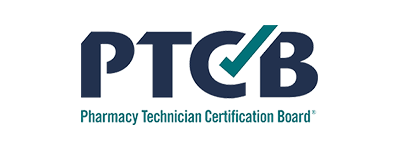

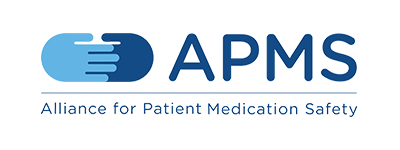








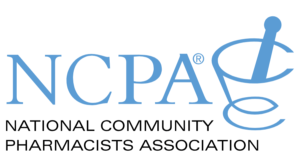 NCPA:
NCPA: